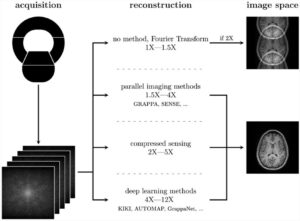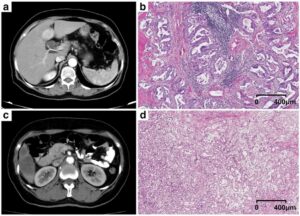How much do you need to spend to use artificial intelligence (AI) in radiology? Between software, hardware and infrastructure, expenses can add up quickly. And without a reimbursement scheme, it takes more than just money to advance the field. One last price to pay could well be AI’s impact on the environment, as training a single algorithm emits a significant amount of CO2, a recent study showed.
Current business models
There is a multitude of solutions that help harness the power of AI for medical imaging out there, but companies developing AI software for radiology applications usually work within pay-per-analysis models and participate in pilot projects to try and evaluate the technology.
Prices vary widely depending on customers’ needs. For example, €5,000 is the starting subscription fee for total cost ownership through icometrix, a Belgian company that sells a cloud-based AI-fed software to help diagnose and follow-up on brain disorders – without extra fees for hardware, installation, maintenance, support etc.
“AI is affordable now. It depends on which kind of centre is involved. For academic centres, our cooperation goes further than just providing reports, since these customers are also interested in providing research,” icometrix CEO and founder Wim van Hecke said.
In Spain, QUIBIM offers an AI-boosted platform for lesion detection in the prostate, breast and a whole range of organs. The tool can be sold either as a license with unlimited analysis running on client premises or on a pay-per-analysis basis running on the cloud.
“Either model is affordable compared to the prices hospitals are used to paying for workstations,” QUIBIM CEO and founder Angel Alberich-Bayarri said.
Infrastructure and hardware costs
AI doesn’t have to be specifically designed for radiology in order to serve the purpose of diagnosing or following-up on patients. For example, Robovision, also based in Belgium, offers a scalable engine for the deployment of AI in medical technology, manufacturing, media, security and agriculture. This engine allows users in different ecosystems to annotate their data and train deep learning models without having to write code.
A popular device in the medical environment is the DGX, an NVIDIA server with 4 Deep Learning GPUs, which costs about €40,000, a fee which is due in part to the complexity of transferring imaging data onto 3D deep learning architectures, according to Robovision founder Jonathan Berte.
“Each brain scan taken on a particular day, for instance, can be within the range of gigabytes. If you want to do a brain scan time series analysis over a longer period of time, you easily end up with terabytes of data. So you need a pretty powerful DL architecture from the infrastructural side,” he said.
An extra cost to take into account in healthcare is hardware. Many hospital environments where radiologists work with AI prefer not to put all of their patient data on the cloud and therefore need to invest in hardware premises both for storage and the AI systems. Hardware costs are not the same from one hospital to the next, but €20k or more is not an unusual amount to spend on such tools.
“You need a significant hardware investment to train your data. It’s an extra cost on top of the AI solution itself. Sometimes, the AI solution comes with your PACS provider as an add-on. The drawback then is that you’re not allowed a lot of flexibility to train your data because you’re vendor dependent,” Berte added.
So, doing the maths, that comes to around €40k for a server, €20k or more for hardware and €20k for the software’s annual license. That means one needs roughly €100k to start working with AI. Still motivated?
Homemade AI platforms: a cheaper strategy?
Hospitals still question AI because of vendor dependence when it comes to running algorithms and cross-checking the information between their different systems – HIS, RIS and PACS.
But a solution has emerged with the recent launch of IMAGR, a pioneering AI vendor-neutral set up that can crunch any algorithm regardless of vendor equipment, at Utrecht University Medical Center [1].
The new infrastructure has helped Utrecht radiologists run white matter hyperintensities segmentation and brain segmentation at the same time, meaning that lesions no longer need to be quantified manually, a task that could take up to 20 minutes per slide. The IMAGR set up has also helped improve an existing algorithm that can quantify fat and muscle in the body, an increasingly useful piece of information in oncology and cardiovascular disease, within seconds.
Besides improving clinical workflow, having a homemade platform that is able to run any algorithm may, in the long run, prove more cost-effective than buying an entire equipment suite.
Nevertheless, a vendor-agnostic infrastructure doesn’t come for free. The IMAGR infrastructure took three years and €150k in hospital funding and a €650k university grant to be built, along with many, many extra unpaid hours.
Personal cost
Today, most of the development in medical imaging AI is the result of an incredible effort put forth from within the research community who work to advance the field alongside defined clinical questions.
This trait is admirable, but it will not be enough to support the development of AI for medical purposes in the future, Berte believes.
“The key driver here is more intellectual curiosity than a solid financial incentive. With this approach, at some point, things strain because they cannot be embedded in a long-term workflow that pays back the investment. On the contrary, in a vertical like agriculture, AI investment scales up more easily because of the long term embedding of AI components in the production lines and value chain and the independence of state reimbursement schemes,” he said.
In many countries, medical AI-based protocols are not yet part of any reimbursement scheme. With the strong regulation and orchestration of nation-states, a key question soon arises for AI in radiology: Why should ambitious radiologists give away hours of their day for which they are not reimbursed?
Reimbursement: a catch-22
Imaging technologies are reimbursed when they are widespread. But in order to become widely used, these solutions need strong incentives like reimbursement.
Establishing a good reimbursement plan for AI-based protocols is tricky, to say the least. AI is multifaceted and many actors with different needs are involved for the following years. Variety is good, but also challenging.
“It’s a catch-22, but it’s much more complicated than you think. You’ll have to analyse why you reimburse one solution and why you don’t reimburse the other,” Berte said.
The key is probably to enable the community to contribute and make sure that radiologists use the tools and evaluate what they can really gain with them. Then they must put those metrics into an equation to know if the effort is worth it and whether it really benefits society.
A legal framework would certainly help answer all these questions much more effectively.
AI’s carbon footprint: the green cost
There is one last item, and not the least, to add to the AI bill.
Training a single algorithm generates CO2 emissions, a team from the University of Massachusetts Amherst recently showed in a paper on the environmental consequences of deep learning [2].
The researchers found that training just one AI model – in this case a neural network model for NLP – produces an amount of carbon dioxide equivalent to nearly the lifetime emission of five average American cars.
Generating greener practises will prove as essential financial incentives to help develop medical imaging AI in a way that truly benefits society. And that probably means more time and money devoted to adequately educating and training academia and the industry.
[1] Dutch radiologists showcase pioneering vendor-neutral AI setup. (2019, October 23). Retrieved from
https://www.healthcareitnews.com/news/europe/dutch-radiologists-showcase-pioneering-vendor-neutral-ai-setup.
[2] Strubell, E., Ganesh, A., & Mccallum, A. (2019). Energy and Policy Considerations for Deep Learning in NLP. Proceedings of the 57th Annual Meeting of the Association for Computational Linguistics. doi: 10.18653/v1/p19-1355













